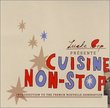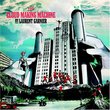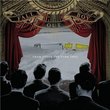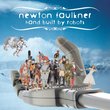| All Artists: Susato, Phillip Pickett, New London Consort Title: Dansereye 1551 Members Wishing: 0 Total Copies: 0 Label: Polygram Records Release Date: 3/15/1994 Genres: Dance & Electronic, Special Interest, Classical Style: Chamber Music Number of Discs: 1 SwapaCD Credits: 1 UPC: 028943613125 |
Search - Susato, Phillip Pickett, New London Consort :: Dansereye 1551
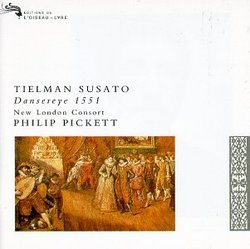 | Susato, Phillip Pickett, New London Consort Dansereye 1551 Genres: Dance & Electronic, Special Interest, Classical
|
Larger Image |
CD DetailsSimilarly Requested CDs
|
CD ReviewsExcellent interpretation for music of the period... 05/27/1999 (5 out of 5 stars) "Although recent commentaries feel that the music on this recording has a forcefulness to it, or too much percussive aptitude, we have to remember that this was indeed dance music of the 1500's. The interpretation of the music on this CD is one of perfection for the period and the instrumentation, also, fitting. Since none of us were there, you might want to see the movie "Elizabeth" to get a feel for the period where some of the dances are used extensively... Excellent recording." Pop music of another age FrKurt Messick | Bloomington, IN USA | 10/03/2005 (5 out of 5 stars) "Tielman Susato is listed as the name on this collection, not because he was the composer, but because in addition to being a composer, Susato's primary business for many years was as a publisher of music. This music comes from the book that he published on dance music - it was the only such book he produced, preferring polyphonic music, choral and church music to things like dance music. However, music publishing was a good business, and many amateurs paid to have arrangements done that they could then practice with (professional dance musicians, ironically for this collection, rarely used printed music but rather preferred improvisation and knew their material by heart). This collection is performed on period instruments of the 1500s, which include violins, viols, rebec, hurdy-gurdy, lutes, guitars, cittern, trumpets, cornetts, sackbuts, serpent, recorders, gemshorne, flutes, crumhorns, curtals, shawms, racketts, sorduns, regal, organ, harpischord and percussion. This particular recording is envisioned as if it were a single evenings' dance and entertainment at court, where dancing was as much an art form as it was a social event. The music here derives from formal compositions of musics and tunes as well as popular folk songs. Susato is most likely not the composer of most of the music (indeed, may not be composer of any), but put things into arrangements that has a sensitivity both to the dance aspects as well as the artistic merits of the music itself. The music here is performed by the New London Consort, a group with great experience in early and Renaissance music, under the direction of Philip Pickett. The pieces performed here range from small ensembles (4 lutes for one; regal and nakers for another) to pieces with massive orchestration (cornet, 3 sackbuts, 2 violins, 4 viols, 7 recorders, curtal, organ, harpischord, 5 guitars, side drums and tabors for one!). This is a bright and lively recording. The purpose is to dance, and in the Renaissance and surrounding times, people danced with vigour, life and spirit! This is uplifting and fun music, the kind that makes one want to get up and move. This recording is simply brilliant from start to finish. " Beautifully imagined G. Faville | Wisconsin | 09/06/2005 (5 out of 5 stars) "I was loaned this CD many many years ago by a family friend. I tape recorded it so I could peruse it at my leisure and grew to love it. Yes, it is percussion heavy, and I don't care. I used to crank La Bataille as if it were my heaviest metal album and every time it makes my hair stand up and fills me with joy. That sounds corny, but it's true.
Some of my other favorites include the suite that has Fagot and the Hoeboeckens Dans (spelling is wrong, I know). I was also loaned the "sheet music" with the CD, a book containing most of the pieces on the disc. When you see it, you realize there are no percussion parts written and no instruments assigned to specific parts with the exception of clef signs. I am immensely impressed by the imagination of Pickett and the New London Consort in their instrumentation and transitions from piece to piece. The sound quality is great, and in the larger moments it sounds as if there is an entire early instrument symphony playing, it's that full. So often, early music sounds timid, wimpy, and small. This disc has a huge range of sound and the highs will elevate you and surely give you the urge to dance. Unfortunately, my tape is gone (plus La Bataille hdd some missing music due to the recording flipping sides in the middle of the piece when I taped it), and the family friend is no longer a family friend, and now I have an empty place in my musical soul. I wish this would be re-issued. I would buy two. Finally, I grew up surrounded by amateur early musicians, and my ears have been seriously battered by people trying to play sacbuts, krumhorns, serpents and hurdy-gurdys. While they look cool, many of these instruments are hell to make sound good. I was floored by the intonation, tone, and colors that the NLConsort achieve in this recording." |

 Track Listings (38) - Disc #1
Track Listings (38) - Disc #1
